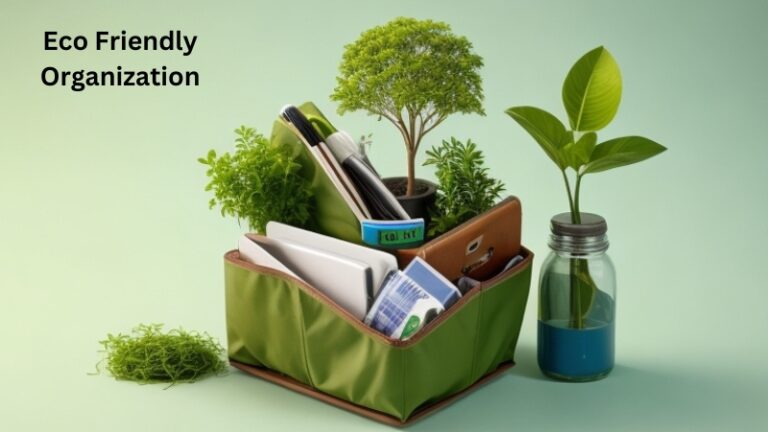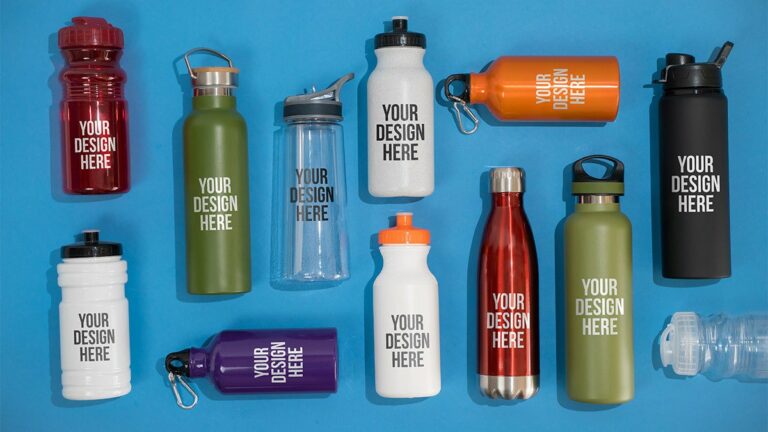Eco-Friendly Packaging Materials for Small Business
For small business owners aiming to minimize their environmental impact, using eco-friendly packaging materials is essential. But where should you begin? Luckily, there are many sustainable options available that can help you achieve your green objectives without spending too much.
From recycled cardboard boxes to biodegradable packing peanuts, there are plenty of choices. In this article, we will delve into the realm of eco-friendly packaging materials for small businesses, emphasizing their advantages and providing practical advice on how to integrate them into your operations. Prepare to enhance your packaging practices and contribute positively to the planet!
Eco-Friendly Packaging Materials for Small Business
Small businesses are important for promoting sustainability and environmental conservation. Packaging materials are a key area where they can make a difference. By using eco-friendly packaging, small businesses can reduce their carbon footprint, attract environmentally conscious customers, and help the planet. This article will discuss eco-friendly packaging materials suitable for small businesses.
1. Recycled Cardboard Boxes
Recycled cardboard boxes are ideal for small businesses seeking to minimize their environmental impact. Made from waste paper, these boxes help divert waste from landfills.
By using them, businesses can demonstrate their dedication to sustainability while ensuring the safety of their products during shipping.
Benefits of Recycled Cardboard Boxes:
- Environmentally friendly: Utilizing recycled materials reduces the demand for new resources and lowers energy consumption.
- Versatile: Recycled cardboard boxes come in various sizes and shapes, catering to the specific needs of different businesses.
- Cost-effective: These boxes are often more affordable than their non-recycled counterparts, allowing small businesses to save money without compromising on quality.
- Customizable: Recycled cardboard boxes can be easily branded with logos and designs, helping businesses create a distinct identity.
2. Biodegradable or Compostable Packaging
Biodegradable and compostable packaging breaks down naturally, reducing environmental impact. Typically made from plant-based sources like cornstarch, sugarcane fibers, or bamboo, these materials help small businesses reduce waste and support a circular economy.
Benefits of Biodegradable or Compostable Packaging:
- Reduced landfill waste: Biodegradable and compostable packaging materials break down into organic matter, reducing the amount of waste sent to landfills.
- Renewable resources: Many biodegradable packaging materials are derived from renewable resources instead of fossil fuels.
- Positive brand reputation: Businesses that prioritize sustainability are often viewed favorably by environmentally conscious consumers.
- Versatility: Biodegradable and compostable packaging options include bags, wraps, and containers, catering to various product types.
3. Recyclable Plastic Alternatives
Traditional plastic packaging is a significant contributor to environmental pollution. However, there are now numerous recyclable alternatives available for small businesses.
These alternatives include materials such as plant-based bioplastics, recycled plastics, and even innovative options like edible packaging.
Benefits of Recyclable Plastic Alternatives:
- Reduced ecological footprint: Recyclable plastic alternatives minimize waste and resource consumption compared to traditional plastics.
- Innovation and novelty: Using edible packaging or unique recyclable materials can attract attention and differentiate products in the market.
- Customer appeal: Environmentally conscious consumers are more likely to support businesses that prioritize recyclable packaging.
4. Sustainable Cushioning Materials
When shipping fragile items, it is essential to use cushioning materials to protect the products from damage. By choosing sustainable cushioning materials instead of traditional foam or plastic options, the ecological impact can be significantly reduced.
Examples of Sustainable Cushioning Materials:
- Recycled paper: Crumpled or shredded recycled paper is an eco-friendly alternative that provides adequate cushioning.
- Biodegradable bubble wrap: Bubble wrap made from biodegradable materials, such as recycled plastic or plant-based sources, offers similar protective properties without harmful environmental consequences.
- Mushroom packaging: Mycelium-based packing materials are becoming increasingly popular due to their ability to decompose naturally and provide effective cushioning.
5. Water-based Adhesives and Inks
When branding and labeling packaging materials, small businesses should consider using water-based adhesives and inks. Unlike traditional solvent-based options, water-based alternatives are less harmful to the environment and contribute to better indoor air quality.
Advantages of Water-based Adhesives and Inks:
- Environmental friendliness: Water-based adhesives and inks emit fewer volatile organic compounds (VOCs), reducing air pollution and potential health risks.
- Easy recycling: Packaging materials with water-based adhesives and inks can be more easily recycled than those with solvent-based alternatives.
- Compliance with regulations: Water-based adhesives and inks align with many environmental regulations, ensuring businesses stay within legal boundaries.
6. Renewable and Sustainable Packaging Fillers
Packaging fillers are crucial for securing products and preventing them from shifting during transit. However, traditional options such as Styrofoam peanuts or plastic air pillows can have harmful effects on the environment. Small businesses have the option to choose renewable and sustainable packaging fillers instead.
Examples of Renewable and Sustainable Packaging Fillers:
- Biodegradable packing peanuts: Made from plant-based materials like cornstarch, these packing peanuts dissolve in water, eliminating waste and reducing the consumption of non-renewable resources.
- Air pillows made from recycled materials: Using air pillows made from recycled plastics helps divert waste from landfills while providing effective product protection.
- Shredded cardboard: By shredding excess cardboard, businesses can create their own packaging fillers while reducing their ecological footprint.
7. Minimalist Packaging Designs
Adopting minimalist packaging designs not only reduces materials waste but also helps small businesses create a distinctive and modern brand image. By simplifying packaging, businesses can prioritize environmental sustainability without compromising on aesthetics.
Advantages of Minimalist Packaging Designs:
- Resource conservation: Minimalist designs use fewer materials, reducing waste and conserving valuable resources.
- Cost savings: Streamlined packaging can result in lower production and shipping costs for small businesses.
- Enhanced brand identity: Minimalist packaging reflects a sense of elegance, sophistication, and environmental consciousness, appealing to a wide range of consumers.
8. Eco-Friendly Labeling and Printing Methods
Small businesses can improve their sustainability practices by using eco-friendly labeling and printing methods, in addition to packaging materials. This allows businesses to reduce waste, lower their carbon footprint, and show their dedication to the environment.
Eco-Friendly Labeling and Printing Options:
- FSC-certified paper: Forest Stewardship Council (FSC)-certified paper ensures that the raw materials used in labeling and printing come from responsibly managed forests.
- Soy or vegetable-based inks: These inks are derived from renewable resources and have lower VOC emissions, making them a greener alternative to traditional petroleum-based inks.
- Digital printing: Compared to traditional offset printing, digital printing produces less waste and requires fewer resources, making it a more eco-friendly choice.
9. Sustainable Reusable Packaging
Promoting the use of reusable packaging can significantly reduce waste generation and support a circular economy. Small businesses can incentivize customers to return packaging for reuse or implement initiatives that encourage the reuse of packaging materials.
Advantages of Sustainable Reusable Packaging:
- Waste reduction: Reusable packaging reduces the need for single-use materials, minimizing waste volume and environmental impact.
- Enhanced customer loyalty: Customers appreciate businesses that actively promote sustainability, fostering long-term loyalty and satisfaction.
- Potential cost savings: While initially requiring an investment, reusable packaging can reduce long-term packaging expenses.
10. Collaborative Packaging Initiatives
Small businesses can join collaborative packaging initiatives that encourage sharing or pooling of packaging resources. These initiatives can help reduce costs, minimize waste, and promote eco-friendly practices within the business community.
Benefits of Collaborative Packaging Initiatives:
- Resource optimization: Collaborative packaging initiatives allow businesses to share packaging resources, reducing the overall demand for materials and minimizing waste.
- Strengthened business networks: Collaborative efforts foster connections and partnerships among like-minded businesses, creating a supportive sustainability-focused community.
- Improved sustainability practices: By participating in collaborative initiatives, small businesses can gain valuable insights and access to innovative packaging solutions.
Faqs for Eco-Friendly Packaging Materials for Small Business:
Small businesses should use eco-friendly packaging materials to reduce their carbon footprint and contribute to a more sustainable future.
By opting for these materials, businesses can attract environmentally conscious consumers, enhance their brand image, and meet the growing demand for eco-friendly products in the market.
Using eco-friendly packaging materials offers several advantages, such as reducing environmental pollution, conserving natural resources, and minimizing waste generation.
Additionally, it helps businesses comply with environmental regulations, build customer loyalty, and differentiate themselves from competitors.
Several packaging materials are considered eco-friendly, including biodegradable plastics, compostable materials (such as cornstarch or bamboo), recycled paper or cardboard, and plant-based alternatives like mushroom packaging or seaweed-based packaging.
Small businesses can source eco-friendly packaging materials from various suppliers and manufacturers that specialize in sustainable packaging.
They can also explore online marketplaces, attend trade shows, or connect with local organizations promoting eco-friendly practices.
While some eco-friendly packaging materials may initially cost more than traditional options, they can provide long-term cost savings.
For instance, recycling materials can reduce waste disposal expenses, and attracting environmentally conscious customers can boost sales and customer loyalty, outweighing the initial investment.
Small businesses can ensure proper disposal of eco-friendly packaging materials by educating their customers about the packaging’s eco-friendly nature and providing clear instructions for recycling, composting, or disposing of the materials responsibly.
They can also partner with local recycling or composting facilities to support their customers in proper waste management.
Final Thoughts
In conclusion, using eco-friendly packaging materials is both beneficial for the environment and for small businesses. By using sustainable materials like biodegradable or recyclable options, small businesses can reduce their carbon footprint and contribute to a greener future.
These materials align with the values of environmentally conscious consumers and show a commitment to sustainability. Investing in eco-friendly packaging can attract more customers, enhance brand image, and drive sales and growth. Embracing eco-friendly packaging promotes environmental responsibility and business success.



